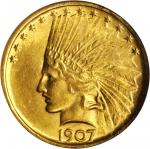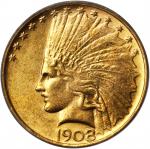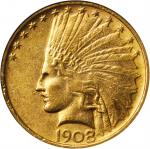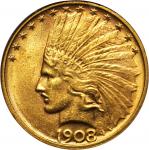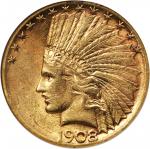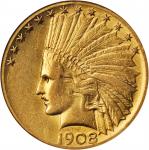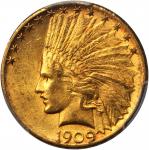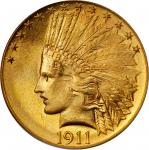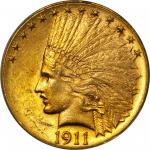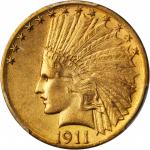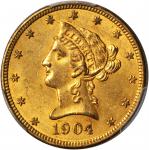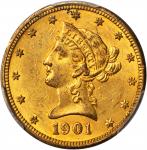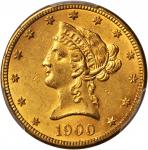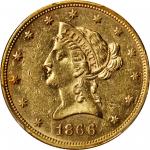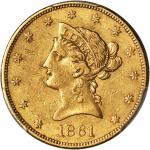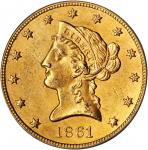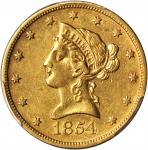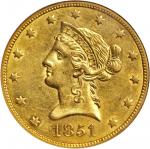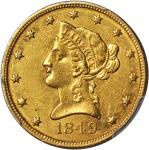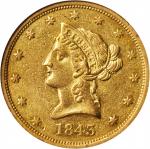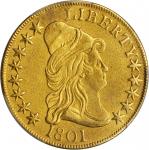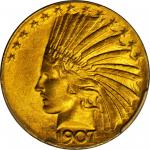1907 Indian Eagle. Periods. Wire Rim. Judd-1901, Pollock-1995. Rarity-3. Raised Stars on Edge. MS-61 (PCGS).Offered is a lovely example of this beautiful and celebrated design by American sculptor Augustus Saint-Gaudens. Bright, vivid, medium gold surfaces exhibit outstanding satin luster that, on its own, could easily support a higher Mint State rating. The strike is typical of the issue, the centers boldly to sharply defined but the peripheries a bit soft due to the curvature of the concave fields. Most of the wispy handling marks that explain the MS-61 grade from PCGS are inconspicuous, although we do mention a tiny, shallow edge bruise on the obverse immediately before the date. All Mint State survivors of the 1907 Wire Rim are beautiful coins and this example is sure to find its way into an advanced collection of 20th century U.S. Mint gold.<p>In his quest to beautify American coinage, President Theodore Roosevelt commissioned Augustus Saint-Gaudens to help with his plans. The sculptor started with the two largest gold denominations. For the ten-dollar eagle, Saint-Gaudens elected to use the head of a woman wearing a Native American war bonnet taken from one of his original concepts for the double eagle. The design was first struck in August 1907 with a thin razor-like rim along the edge of the coin. In addition to the diagnostic wire rim, swirling raised die polish lines are clearly visible in the obverse and reverse fields, a feature that is particular to this issue.<p>In his magisterial book on this coinage era, numismatic researcher Roger Burdette has ascertained that, according to Mint records, 542 examples were struck as opposed to the 500-coin mintage often quoted in numismatic references. An initial production run of 500 coins certainly did take place in late August to early September 1907, but it was followed by a subsequent delivery of 42 coins struck between September and December of that year. Seventy of these coins were later melted down during the First World War, leaving a net mintage of 472 pieces. The coins proved to be in high demand from the outset and were distributed to dignitaries or sold to contemporary collectors. Like their larger High Relief double eagle cousins, the high relief and wire rim (or "fin" in Mint jargon) of the first Indian eagles were seen as impediments to stacking, and also led to difficulties in the coining process. Changes were made to eliminate the wire rim, resulting in the exceptionally rare Rounded Rim variant of the 1907 Indian eagle, which itself yielded to the final low relief version (as modified by Chief Engraver Charles Barber) that also had the periods removed from the reverse.<p>The Wire Rim eagles stand as the closest expression of Saint-Gaudens original vision for this design and have long been popular with numismatists as well as art collectors. Q. David Bowers notes that there was a fairly high survival rate, with some 400 or so examples known in all grades, including a couple of dozen that are in worn condition or impaired from mishandling.


